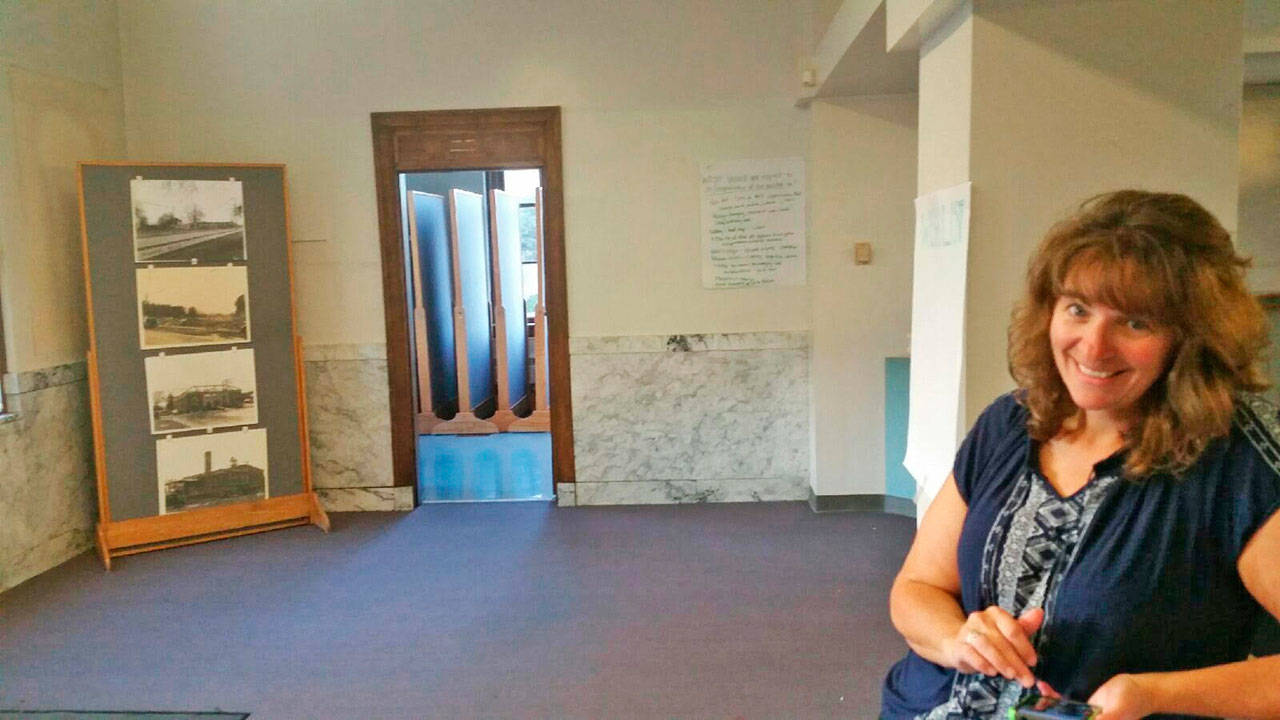In 2016 the City of Auburn bought the old Public Health Building on Auburn Avenue from King County.
As City leaders said, to turn it into an arts and culture center.
Now that Auburn has the 8,000-square-foot, 80-year-old, red brick building — Auburn’s Post Office from 1937 to 1964 — City leaders have things to figure out.
Like, how much will it cost to repurpose the building?
And, what will Auburn residents get for their bucks?
Project Architect Ray Johnston of Johnston Architects, Stan Foster of Public Affairs Research Consultants, and Daryl Faber, director of Auburn Parks, Arts and Recreation, filled in some of the blanks for Auburn City Council members during a Feb. 27 study session at City Hall.
Built in 1937, across the alley north of Auburn Avenue Theater, the brick building with the landmark cupola naturally lends itself to a public-gathering place, Faber said, reflecting what comments collected in meetings and in surveys since the purchase have said.
“Some see performing arts, some see literary arts, some see painting and gallery space, but everybody talks about the soul of Auburn in the downtown. We have brought 14,000 people to downtown Auburn in the Auburn Avenue theater in the past year, and this could really augment that because of the location,” Faber said.
Just how to redo the building to make it fit all the different uses inside so it becomes the downtown magnet City leaders hope for is a question that looms large.
“The idea of changing to a different use also calls for various modifications,” said Johnston.
Among the possibilities: a ground-floor coffee shop, artists in residence, classes, dance practices, a place where artists could sell their works, perhaps even a green room to meet the needs of thespians in that theater across the alley.
“I want to see how we are going to blend those two structures (Auburn Avenue Theater and the arts and culture center) to kind of make it truly a center, and not just a building,” said Deputy Mayor Largo Wales.
Applying a per square-foot formula, adding sales tax and factoring in other contingencies, Johnston gave a rough estimate of $3 million, to be split between two work phases.
“If there is a comfort zone raising money for projects, this is definitely within the comfort zone, particularly for a city size of Auburn,” Johnston said.
Faber said the City of Auburn, which already has $300,000 in the kitty and a couple of grant applications in the works, has applied for a $480,000 grant from Art Place, which holds an annual nationwide competition.
As for the work itself, Johnston said the tarrazzo floor inside the entrance — a pricey-and-hard-to-find commodity today — should be retouched, there are hardwood floors to refinish and ceiling duct work that has to be done, among other projects.
A bit of good news: Johnston said the superstructure, the concrete and brick and, indeed, all the fundamental aspects of the building are in “pretty good” shape. What typically needs replacement in such buildings, said Johnston, who has designed several such projects, are features that normally wear out over time, for example, windows, and mechanical, electrical and plumbing systems.
Faber addressed the funding strategy.
“We’ve kind of put it into larger foundation grants of $50,000 or less, and divided those into numerous groups and other potential funding opportunities,” Faber said, citing Arts Washington and annual grants awarded by the State Department of Commerce.
“We know the players pretty well, and I think this project really speaks to what the public wants, and I think it would be a great ask from the state and federal governments,” Faber said.
As for timelines, Faber said the City hopes to begin renovations by the close of the year, continuing into 2018. It may also work on funding for perhaps 50 percent of the ground-level floor work.
“We would like to get activity in there, it’s better than being empty,” Faber said.


